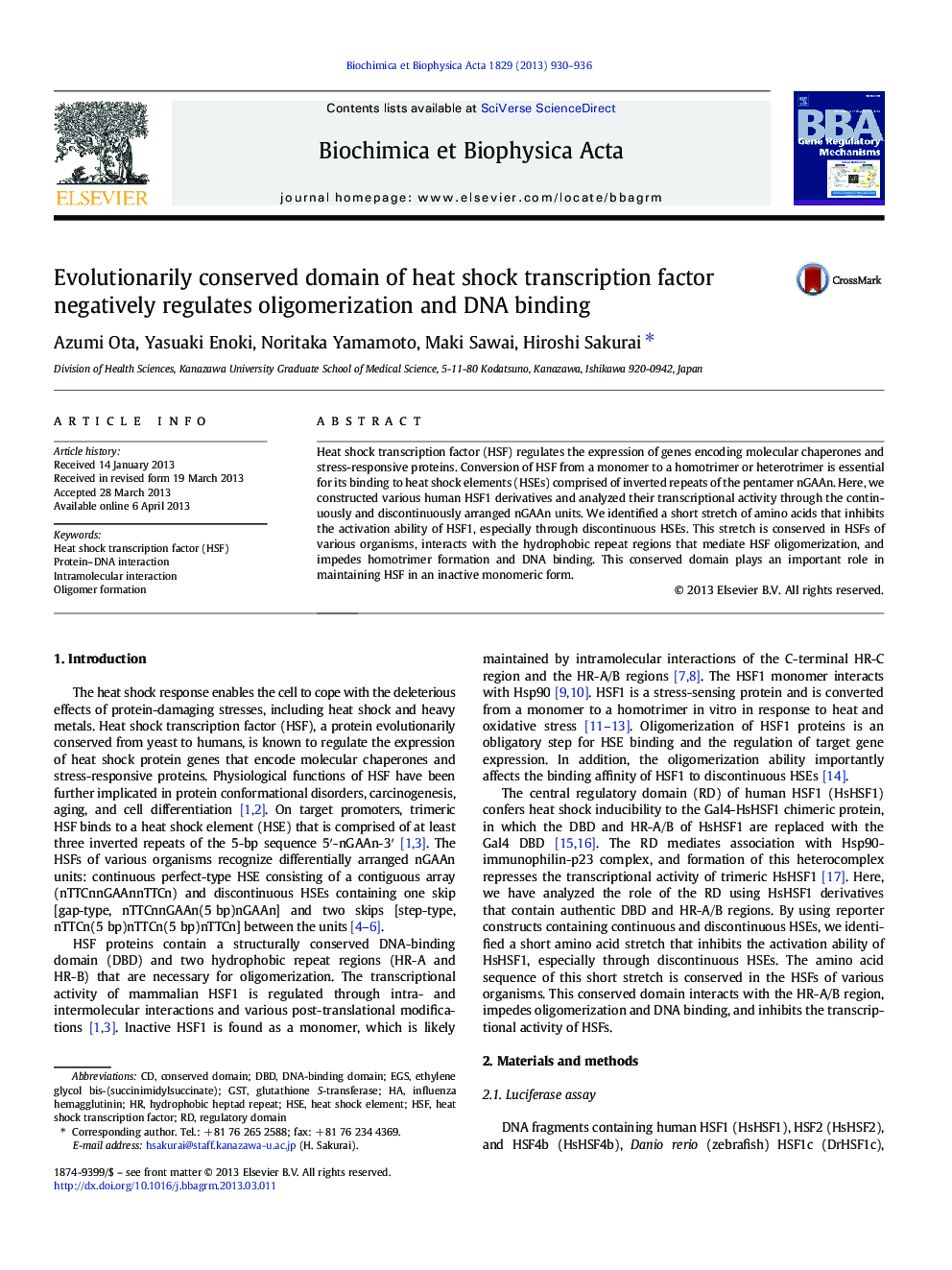| Article ID | Journal | Published Year | Pages | File Type |
|---|---|---|---|---|
| 1946467 | Biochimica et Biophysica Acta (BBA) - Gene Regulatory Mechanisms | 2013 | 7 Pages |
•A negative regulatory region was identified in human HSF1.•The amino acid sequence in this region is conserved in HSFs of various organisms.•This conserved domain impedes homotrimer formation via intramolecular interactions.•The conserved domain is important in maintaining HSF in an inactive monomeric form.
Heat shock transcription factor (HSF) regulates the expression of genes encoding molecular chaperones and stress-responsive proteins. Conversion of HSF from a monomer to a homotrimer or heterotrimer is essential for its binding to heat shock elements (HSEs) comprised of inverted repeats of the pentamer nGAAn. Here, we constructed various human HSF1 derivatives and analyzed their transcriptional activity through the continuously and discontinuously arranged nGAAn units. We identified a short stretch of amino acids that inhibits the activation ability of HSF1, especially through discontinuous HSEs. This stretch is conserved in HSFs of various organisms, interacts with the hydrophobic repeat regions that mediate HSF oligomerization, and impedes homotrimer formation and DNA binding. This conserved domain plays an important role in maintaining HSF in an inactive monomeric form.
